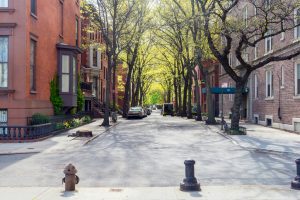
You ready?
We’re already just a few weeks into spring and it looks like an early spring warm up is coming to your area.From April 8 to 21, the forecast is a 50% chance for above normal temps from the Hudson Valley to the Catskills. That means you’ll be able to enjoy some energy savings with lower heating bills as nights could be 3-6 degrees warmer than average. If you haven’t shopped for electric companies in New York lately, now’s the time to find out if you can save money with a better plan. And here’s why—
The big picture
NOAA is forecasting above average temps for states east of Colorado this coming month with a 50% chance for above normal rainfall in the Mississippi and Ohio Valleys, the mid-Atlantic states, and the Northeast. Part of the reason behind this is that the Arctic Oscillation is expected to stay near neutral or slightly positive. Normally, as the northern hemisphere moves into spring, the Polar Vortex gradually weakens and begins to packing up for its summer vacation. So, there’s reduced likelihood for a sudden outbreak of bitterly cold arctic air. The other reason is that because of current drought conditions along the east coast and the Hudson Valley, there’s not very much soil moisture present (nor too much expected) to produce much regional evaporative cooling. Summer temperatures are expected to be above average, too, raising the possibility of higher cooling costs. However, there could be some good news ahead, too.
A look ahead
One of the planet’s main climate engines is the El Nino/Southern Oscillation (ENSO). The ENSO region is over 8,300 miles of equatorial Pacific Ocean. Sea surface temperatures (SST) are monitored here because this huge amount of water interacts with the atmosphere by heating or cooling it and can thereby affect global weather. The ENSO region is divided into four areas. Nino 4 starts at 160°E and ends at 150°W. Nino 3 begins at 150°W and ends a 90°w. Nino 1 and 2 begin there and end on the Ecuadorian coast. Where Nino 3 and 4 overlap is Nino 3.4. Temperature readings taken from this area are used as an average of SSTs across the equatorial Pacific.
SSRTs in the 3.4 region have risen from their recent cold La Niña phase. They’re not warm enough to be considered El Niño temperatures, so the condition is called “ENSO Neutral”. While ENSO doesn’t really effect temperatures in North America during the spring, El Niño’s effect wind shear during the summer and tend to suppress Atlantic hurricanes. La Niñas are somewhat opposite. ENSO neutral conditions allow other atmospheric cycles to exert more influence. That said, researchers expect SSTs to climb this summer in the Nino zones. So, there’s a good possibility that an El Niño may emerge this summer — which is good news for folks along the Atlantic coast since an emerging El Niño might reduce the number of tropical storms or hurricanes right at the most dangerous part of the season.
Forward planning = Future savings
If an El Niño emerges and develops into the fall, it could have an effect on winter temperatures in North America depending on how strong it is. In the winter, El Niños bring cool, wet weather to Texas and the southeastern states while New York experiences more moderate winter temperatures. Warmer winter temperatures in the north mean less natural gas is burned for space heating.
At present, the EIA expects higher natural gas prices for the rest of the year. Natural gas stocks are finishing up the 2016/2017 winter 19% below the five-year average. All this above average warmth we’re seeing now will hang around into the summer. So, it’s going to get hot and electricity prices will probably spike, especially in metro areas like Binghamton, Brooklyn, Buffalo, and Albany. While power burn to meet cooling demand will drive up the wholesale price of gas through the summer, if a strong El Niño emerges, winter time natural gas prices and electricity rates could fall as they did in 2012 and 2016.
Sure, that’s all speculation. But, it shows how global weather conditions can shape your New York electricity rates. Knowing that, can you afford your current energy provider and still keep your cool this summer? What about next winter’s rates? Will you want to change providers? And how can you find the best price for the best rate with the best provider?
NYEnergyRatings.com is the only place where you can read reviews, check out rates, and compare electricity plans to find the best electricity company that’s right for your family.
